Not exactly sure what fitspo means? We’re breaking down what you need to know about fitspiration and why it might be more harmful than you think.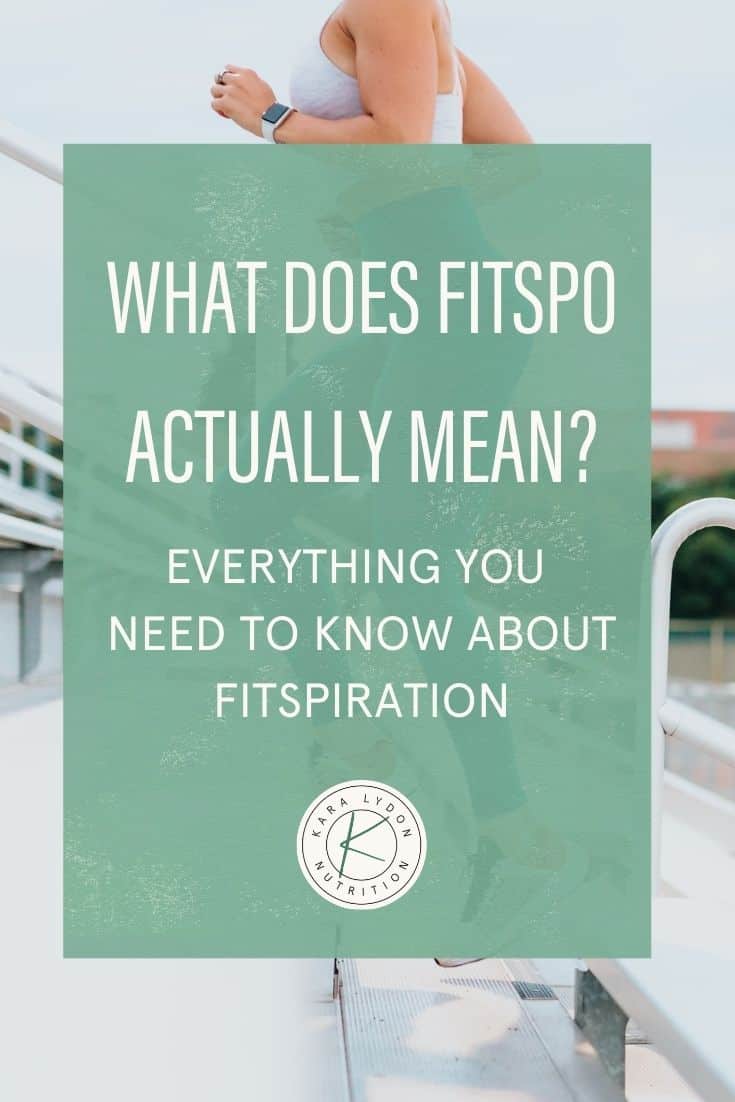
This blog post was written by Jean Liu, MS, RD, LDN. Jean is passionate about helping her clients let go of guilt and shame around eating, find food freedom, and discover empowered, joyful movement. As a former athlete, Jean is especially interested in working with clients with athletic interests who want to heal their relationships with food and their bodies.
“Transformation Tuesday”
“Train insane or remain the same”
“4 exercises that give you abs”
“Fit is the new skinny”
When you first read these messages, they sound catchy and motivating. You’ve seen taglines like this on social media from fitness professionals and celebrities. They have millions of followers and they look like they know what they’re doing. You’re feeling inspired because it’s about pursuing health through exercise. Or, is it?
These messages are code for fitspo. In fact, they came from a quick search on Instagram using the hashtag, #fitspo.
What is “fitspo”?
The word “fitspo” is a popular buzzword derived from “fitspiration,” which is the combination of the words “fitness” and “inspiration.” The term first began trending in 2013 as a response to the thinspo trend, which were posts and mottos created to motivate weight loss.
The internet quickly identified how harmful the thinspo trend was in relation to developing poor body image, and the fitspo response countered thinspo by trying to shift the focus to achieving fitness instead of thinness. Unlike thinspo, the fitspo hashtag is still widely used and socially accepted: it currently houses over 72 million posts on Instagram and garners 500 new Tweets every 4 days.
At first glance, fitspo appears different and like a positive shift from thinspo – but if we dive deeper, we can see how it can be just as dangerous
3 reasons why fitspo can be harmful
1. Fitspo still promotes an ideal body type.
A 2017 article titled “‘Fitspiration’ on Social Media: A Content Analysis of Gendered Images,” quantified the content of social media #fitspo posts, breaking down the posts into categories of either food, exercise, or the body. About 75% of the posts were thematically related to exercise, and 66% of posts highlighted their full bodies.
The study used the Figure Rating Scale to assess thinness and muscularity, and the majority of females were “thin but toned”; males were “muscular or hypermuscular.” The majority of the posts associated with fitspo promote a specific look: thin, muscular, or hypermuscular.
This study confirms what we can see with our own eyes – the fitspo community is immersed with images of the thin ideal, which not only disregards how different bodies can be healthy at different sizes but it also marginalizes fat folks who are part of the fitness community.
This doesn’t sound all too different from the collection of images you might find from a thinspo tag, and research shows it all has the same negative impact on self-esteem and body image.
2. Fitspo messaging promotes rigidity and focuses on weight loss.
Instead of tuning into your own body’s cues and wisdom, fitspo culture promotes a need to exercise that is about a militant routine regardless of your circumstances. Take no rest days! It doesn’t count until you sweat. No pain no gain. This type of messaging is dangerous because it sounds like it’s “in the name of health,” when in reality it asks you to stop listening to your body as an expert.
You don’t need to engage in rigorous workouts everyday to obtain the myriad of health benefits exercise provides. In fact, for substantial health benefits, the 2018 Physical Activity Guidelines for Americans, 2nd edition recommends that adults do at least 150 minutes (2 hours and 30 minutes) a week of moderate-intensity (like brisk walking) or 75 minutes (1 hour and 15 minutes) a week of vigorous-intensity (jogging or running) aerobic physical activity, or an equivalent combination of moderate- and vigorous-intensity aerobic activity. 150 minutes a week may sound like a lot but if you break that down it’s 30 minutes of walking five days a week.
Fitspo culture also promotes modifying your body/shape/size by exercising. We see this with messages around compensating for your food with exercise, workouts named “fat burning” or “best for weight loss.” Unless we uncouple exercise and fitness from weight loss, our motivation for exercise will be attached to body change.

Ask yourself: would you still do this workout, even if that meant no appearance changes to your body? While exercise does play a role in metabolism and preserving lean muscle mass, focusing on the weight loss/body modification piece minimizes the ways movement promotes health, improves quality of life, and prevents some chronic disease. Research shows that exercise can improve health without any changes to weight occurring. Because fitspo is still focused on the desire to change the body in a way that revolves around the thin ideal, fitspo is just thinspo in disguise. Fitspo culture is diet culture repackaged and rebranded in a way that sounds socially acceptable.
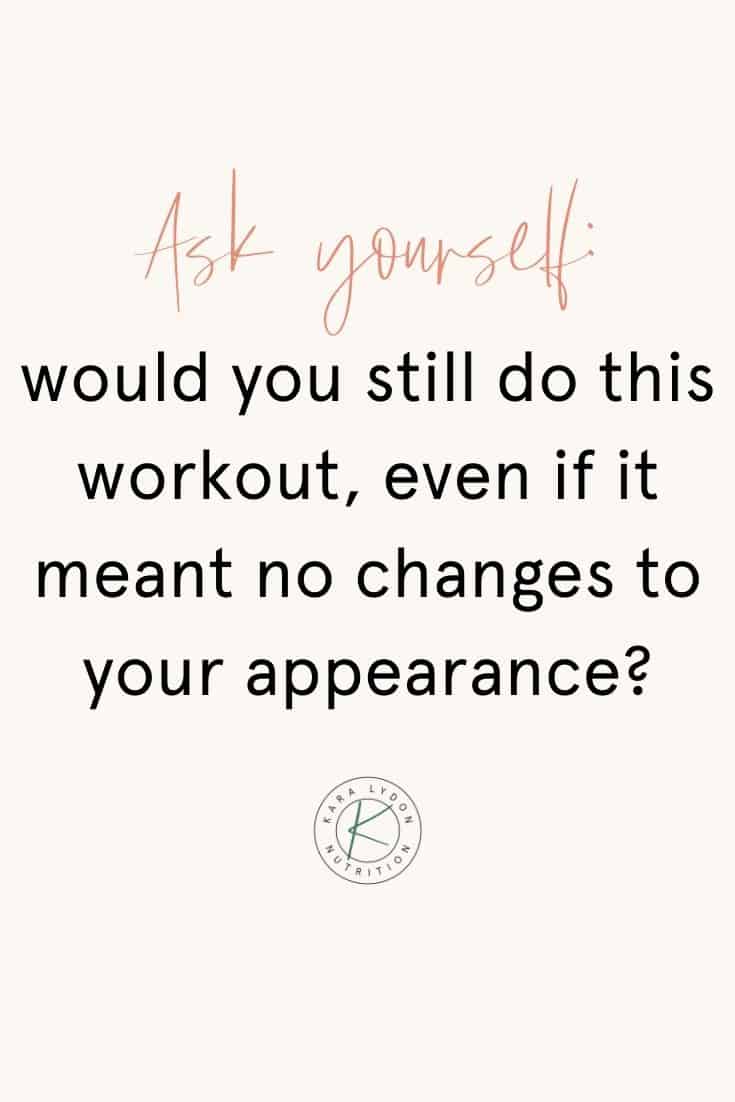
3. Fitspo promotes the notion that there is a “look” to being fit or healthy.
Healthy doesn’t have an appearance. There is a significant body of research under the Health At Every Size paradigm indicating how people of diverse body shapes and sizes are healthy, regardless of weight. Studies show how health promoting behaviors, like exercise, improve longevity and quality of life regardless of body size.
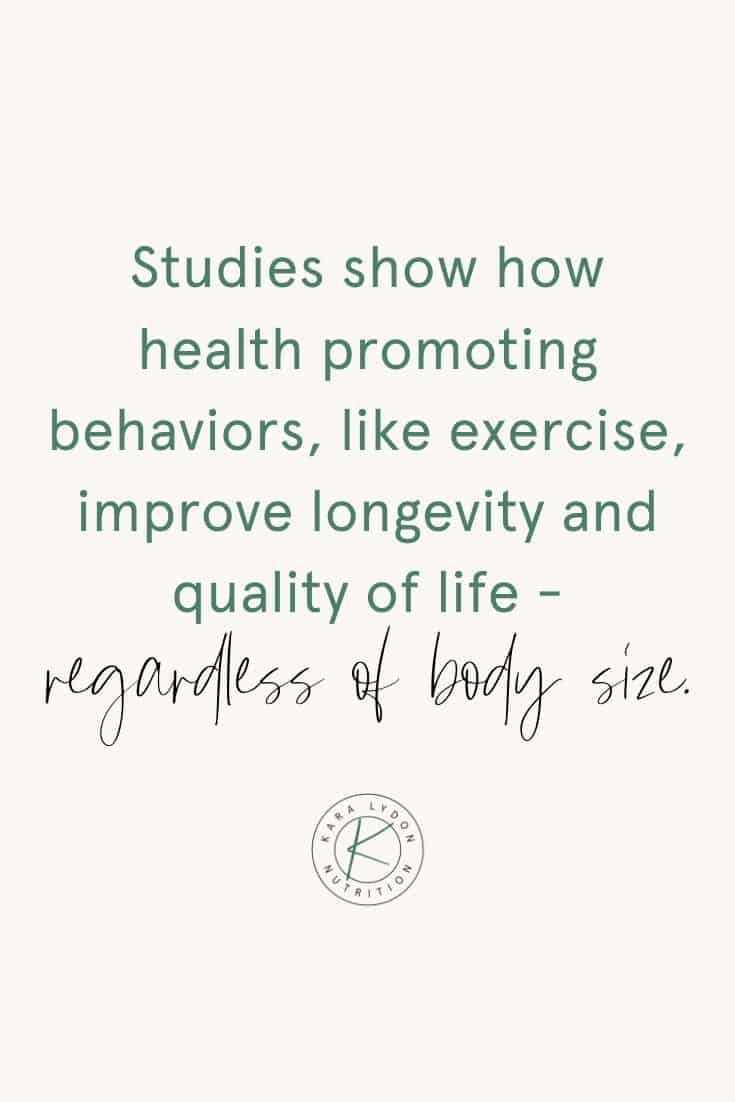
In a study titled “Fitness vs. Fatness on All-Cause Mortality,” the authors found that those of good cardiorespiratory fitness in the “overweight” and “obese” BMI categories had similar mortality risk as those in the “normal” range. In fact, individuals who had poor cardiorespiratory fitness had twice the risk of mortality, regardless of BMI.
Inappropriate assumptions about people based on their size has an incredibly harmful impact on a person’s overall health. Weight stigma increases stress levels, and the broader structural impact of weight discrimination reinforces a system that is inhospitable to large bodied people.
As a community, we need to do better than to promote a specific appearance for health when we can’t assess someone’s health status by their appearance alone. There is so much harm done to people in larger bodies when the fitspo agenda reinforces the idea that you must be thin to be fit.
How to Approach Fitness in a Way That’s Actually Inspiring
So what are some actually inspiring, non-harmful ways we can approach physical activity? Here are some steps to explore various approaches to movement:
- Principle 9 of Intuitive Eating “Exercise – Feel the Difference”. This principle is about prioritizing exercise that feels good and is enjoyable for you. Does the exercise improve your stress levels? Change your day-to-day energy level? How does it impact your sleep? Instead of playing a numbers game with x amount of times per week for y minutes, explore how the exercise makes you feel throughout your day.
- Movement is not all or nothing. Elaborating on the point above – “if I can’t get in a 60 minute session, it doesn’t count” – is black and white thinking that reinforces rigidity vs. how you feel. Any and all movement counts, whether that be from taking the stairs, gardening, or 10 minutes of yoga.
- Mindful movement. Shifting the language from exercise to movement can be helpful in reframing how physical activity looks. Mindful movement has 4 components: exercise that enhances your connection and coordination, alleviates mental and physical stress, provides enjoyment instead of punishment, and rejuvenates the body instead of exhausting it (check out a past blog post for more on the difference between healthy movement and overexercise). Are you able to integrate movement into your day that embodies all four components?
- Rest appropriately. Just like food and nutrition, a few days or weeks of no exercise will not make or break your health. In fact, rest is essential for muscle recovery, injury prevention, and improved future performance. And sometimes, choosing to take care of yourself means not exercising. Not getting enough sleep? Or feeling a cold coming on? Take the day off. Your body will thank you.
- Make it fun. Consider playing a team sport (once it’s safe to do so) or doing exercise with a friend (even virtually) to make it a social activity. Or maybe you want to make exercise a time of solitude – meditate, play music, make it work in a way that you enjoy. Engage in a variety of activities that interest you.
- Diversify your social media. Find a variety of athletes that come in different shapes and sizes excelling at their physical activity. We have the power to curate what we are exposed to on our social media, and choosing diversity in the field of fitness can help to reinforce and expand our understanding of what fitness can look like.

If you are seeking weight-loss inspiration through fitspo, I invite you to ask yourself why traditional “fitspo” bodies equate to what is healthy or acceptable. Does this apply to yourself and the people around you? Remember that exercise and movement is just ONE piece of the puzzle to our health and wellness.
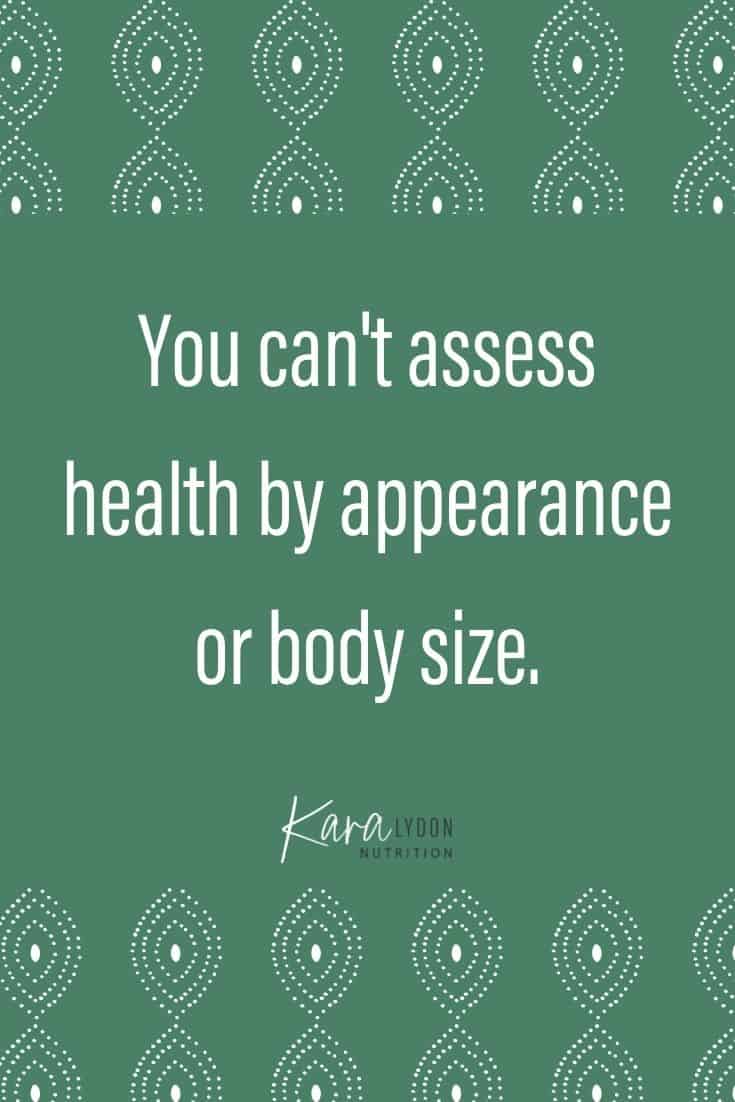
Health is more than just your fitness level. Our health is our genetics, social determinants and environment, medical care, and then our behaviors. Again, our health improves with health promoting behaviors, regardless of our weight or any changes in weight. So incorporate movement into your life in a way that makes sense for you. Focus on exercise as a means to self-care – for both your physical and mental health.


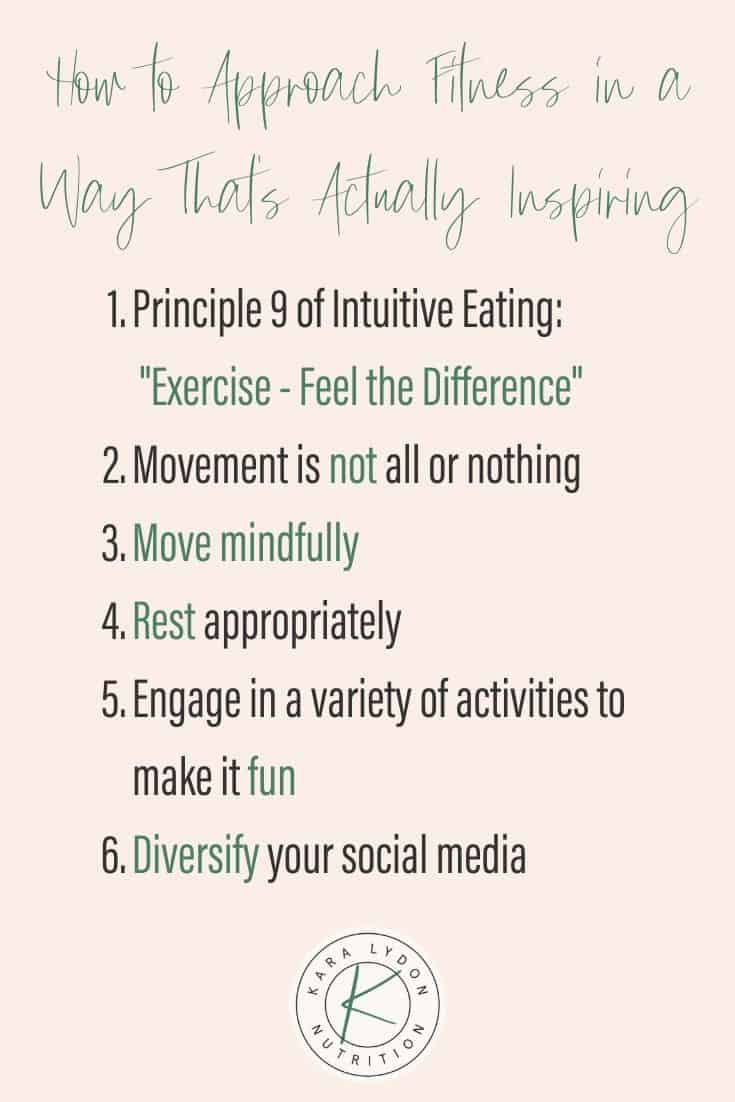
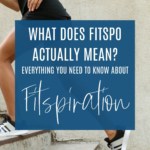
Love this, thanks for sharing 🙂
Thanks!!